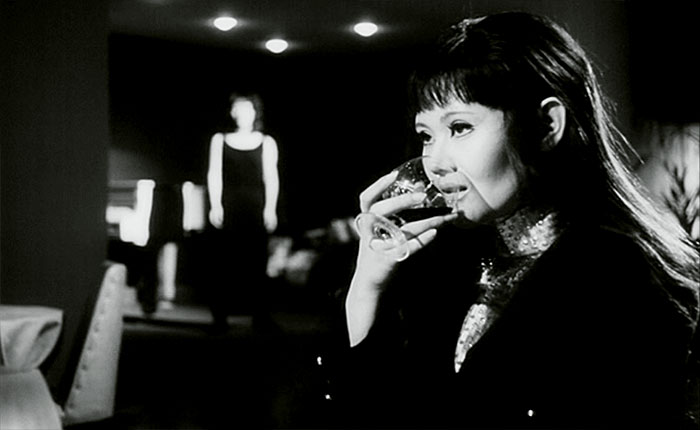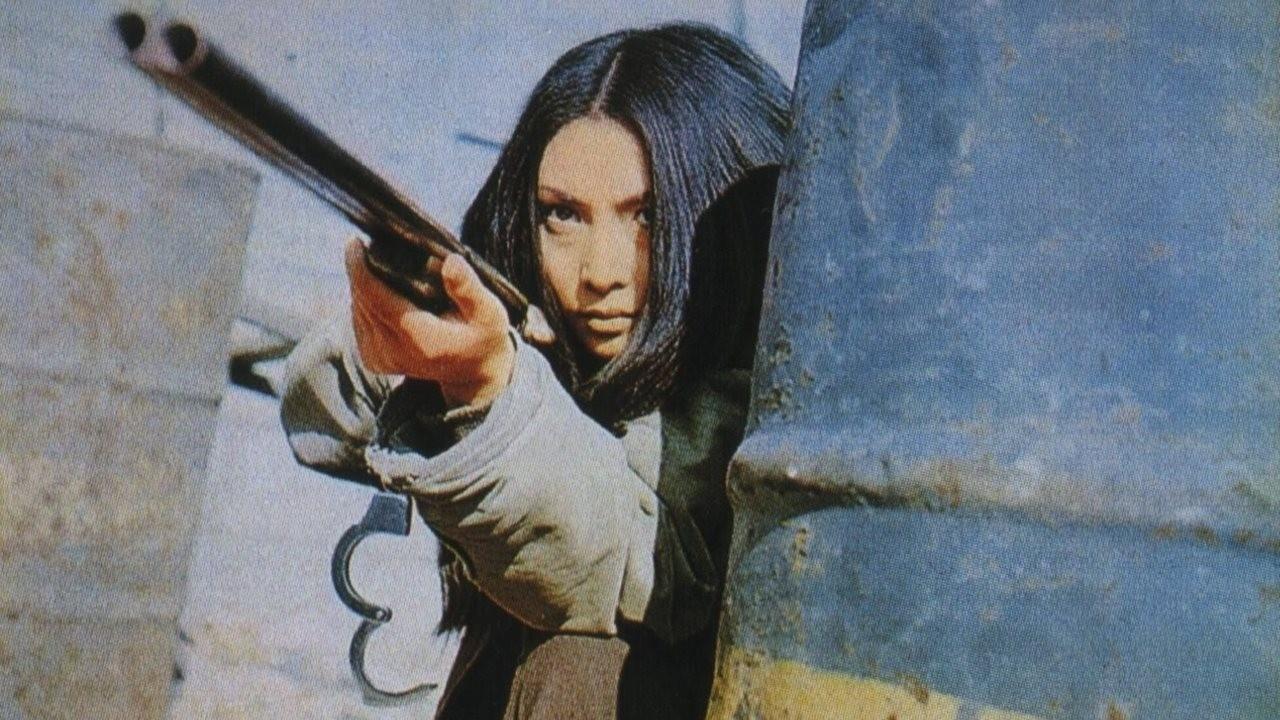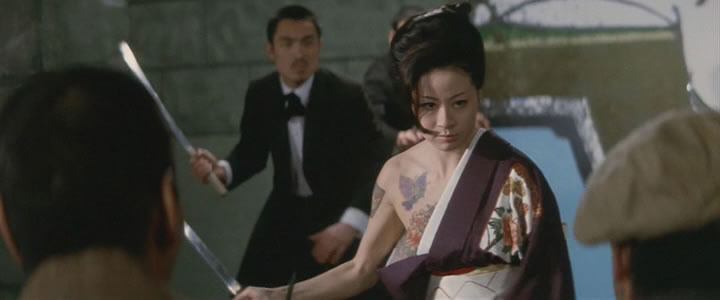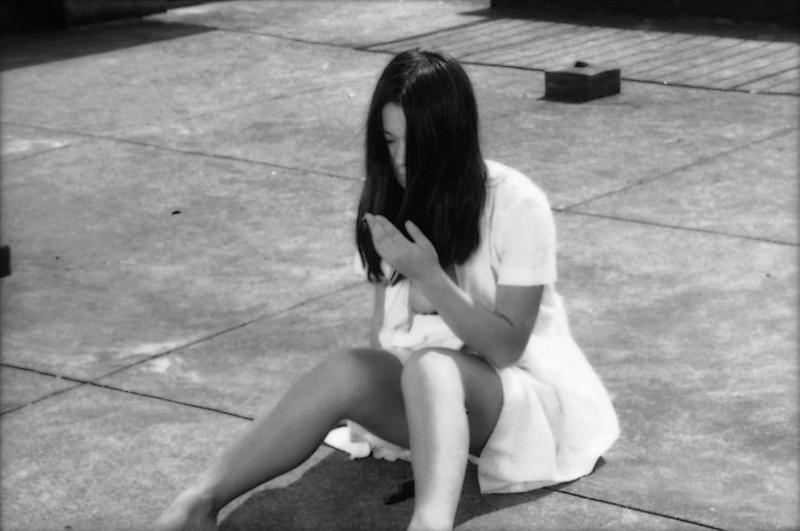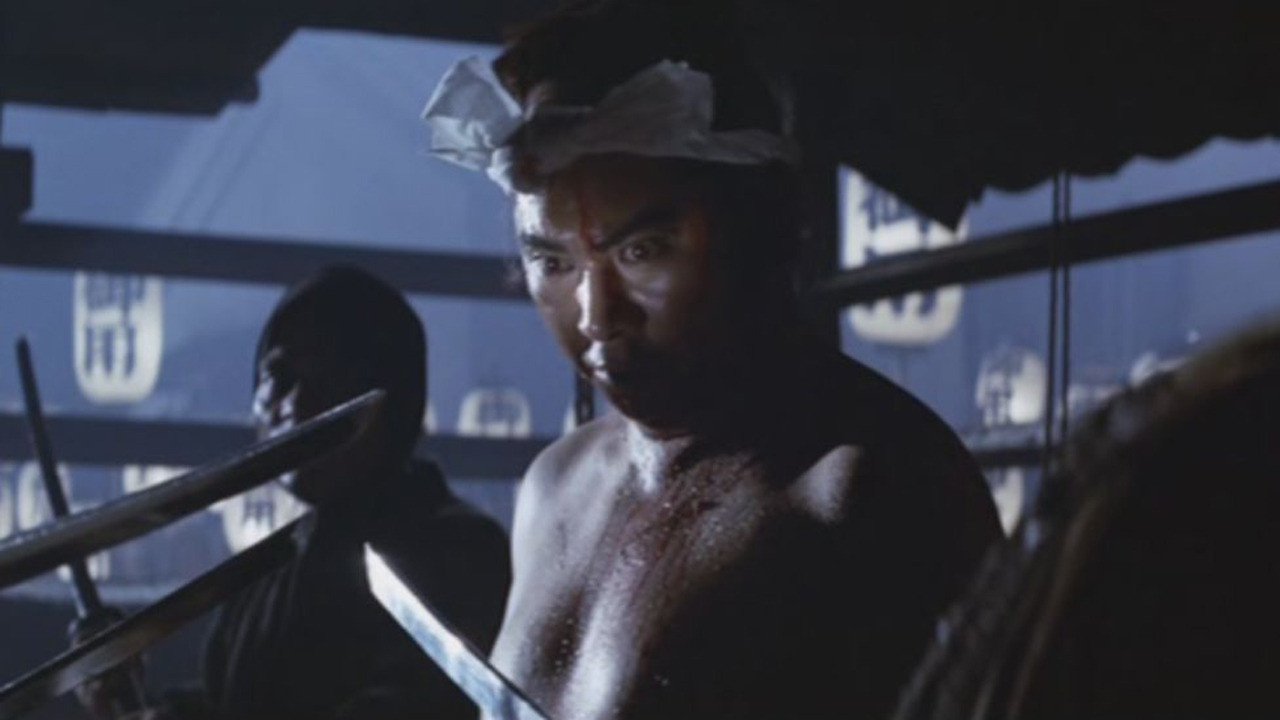5. Ecstasy of the Angels (Koji Wakamatsu, 1972)
This particular movie is one of the few samples of the genre that incorporates political elements, by one of the foremost renowned directors in this category.
The script revolves around a cell of a revolutionary group, whose leader’s alias is “October” and its members are named after the days of the week. During an infiltration mission in a US military warehouse, several members are killed and October is permanently blinded; however, they manage to steal a number of bombs.
Nevertheless, the leaders of the organization deem October unfit to continue the struggle and subsequently send the head of another cell to retrieve the bombs from the apartment the remaining members of the group are hiding. Feeling betrayed and isolated, October and his soldiers proceed on taking matters into their own hands. What follows is an alternation between sex, violence and scenes in a cabaret.
Wakamatsu directs a movie dealing with human decadence, particularly on how ideals can drive people to heinous acts, without other reasonable cause. Additionally, he communicates his thesis regarding the failure of the student movement that occurred in Japan during the late 60s and early 70s.
Wakamatsu uses some fascinating cinematic techniques in this film. Nearly all of it is shot in black and white, yet at times, a handful of color emerges to highlight the scenes that the director wants to draw attention. Furthermore, he used the outmoded 4:3 frame to shoot the film, instead of the widescreen Cinemascope format that the majority of the filmmakers were using at the time.
This is probably the hardest film on the list to watch, not only due to the violent and titillating scenes, but also for its obscure art house aesthetics.
4. Female Convict Scorpion Jailhouse 41 (Shunya Ito, 1972)
Based on the homonymous manga by Toru Shinohara, this film incorporates one of the foremost characteristic settings of the genre: women’s prison. “Jailhouse 41” is the second part of the Sasori franchise that consists of eight movies, the last of which was screened in 2011.
Nami Matsushima is a prisoner locked away in an underground confinement. When an inspector visits the institution, the warden, Goda lets her out of her cell for the day; alas, she proceeds on traumatizing him with a self-made weapon, thus resulting in a riot.
However, the guards stifle the upheaval and proceed on severely punishing the prisoner, especially Nami, who is publicly raped by four guards. Nevertheless, after awhile she’s able to escape with six other convicts. The rest of the movie depicts the seven women struggling against the guards, the warden and each other.
Shunya Ito presents one of his utmost artistic works, using cinematic techniques rarely appearing on the genre. For example, the script progresses as in a comic strip, a tactic chiefly evident in Nami’s persona, where Meiko Kaji acts as if she is a character out of a comic book.
Kaji acts her part in her usual, distinguished approach. She scarcely talks and spends the majority of her scenes either as a victim of violence and humiliation, or as a sex object.
3. Sex and Fury (Noribumi Suzuki, 1973)
Another one from the movies Quentin Tarantino drew from in creating “Kill Bill”, “Sex and Fury” reinvigorated the “female gambler” subgenre chiefly by including nonstop violence, nudity and sex.
While still a child in the Meiji Era in Tokyo, Ocho witnesses the murder of her father. Twenty years later, she is intent on using every skill available to her, including gambling, thievery and swordplay, to exact revenge. A friend’s dying request and a meeting with a foreign spy complicates her mission, while the Yakuza is after her.
The film was considered controversial at the time, even for the genre, largely due to a scene where Ocho fights naked in the snow, slaughtering samurai and ending up covered in the blood of her victims.
Suzuki distinguishes himself from the others filmmakers of the category, due to his superior competency in cinematography. In “Sex and Fury”, he incorporates several vivid colors to highlight the violent scenes, thus creating an exquisite visual outcome. Furthermore, he uses rapid camera cuts, bumpy shots by a handheld camera, and sudden zooms on the action to highlight the frames.
Aside of the above, most distinguished characteristics of exploitation films are present, even including girl-on-girl action and a surreal scene with some nuns wielding knives on a train. Reiko Ike is impressive as Ocho, at least equal with her “rival” in the female killer genre, Meiko Kaji.
2. Go, Go, Second Time Virgin (Koji Wakamatsu, 1969)
This is probably one of Wakamatsu’s simplest films, primarily due to its miniscule budget that forced the director to shoot it in four days, almost exclusively in a sole location: a rooftop.
Four boys carry Poppo, a teenage girl, against her will onto a rooftop, where they rape her. A fifth boy, Tsukio, witnesses the incident; however, he stands passively on the side watching it happen. Although the other boys leave, he remains through the night waiting for her to wake. In the morning, the two of them begin discussing their lives.
Wakamatsu deals with themes of sex and death in adolescence, portraying the former as something awful and violent and the latter as the sole solace. Additionally, revenge, the omnipresent subject of the genre, is also present.
The film is nihilistic, a characteristic primarily emerging through the dialogue of the two protagonists. For example, at a point Tsukio asks Poppo if she enjoyed being raped.
Technically, Wakamatsu uses his usual approach of shooting chiefly in black and white, splashing color when he wants to underline a scene. This is another difficult film to watch, in spite of its short duration (65 minutes).
1. Hanzo the Razor: The Snare (Yasuzo Masumura, 1973)
Definitely the sleaziest film on this list, “The Snare” is the second segment of the “Hanzo the Razor” trilogy. The movie stars Shintaro Katsu of Zatoichi fame, who also produced the trilogy through his own production company.
The story is based on the manga “Goyokiba”, by Kazuo Koike, and features an incorruptible policeman in feudal Japan who uses unusual methods.
In this particular movie, Hanzo and his assistants, Devil-Fire and Viper, initially argue with Okubo, the government treasurer, and his bodyguard Mikoshi. After awhile, they discover the dead body of a young woman who leads them to an underground abortion sect, headed by priestess Nyokai, in a case that becomes much more complicated than Hanzo originally thought.
The rest of the movie is an intermixture of crudeness, slapstick comedy and gore. Hanzo interrogates women by raping them, using his immense part, which he trains in gruesome rituals. Additionally, “The Snare” features thieves, corrupt officials, bridge sword fights, bondage and the inevitable fountains of blood.
However, beyond the aforementioned, Masumura directs a parody of the samurai genre, using politically incorrect humor and images regularly found on absurd manga instead of the silver screen. Shintaro Katsu is marvelous as usual in the role of the absolute anti-hero.
Author Bio: Panos Kotzathanasis is a film critic who focuses on the cinema of East Asia. He enjoys films from all genres, although he is a big fan of exploitation. You can follow him on Facebook or Twitter.
